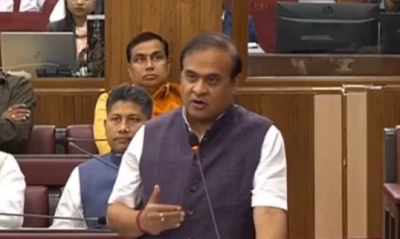Chief Minister Dr Himanta Biswa Sarma has labelled high population as a “disease” afflicting Assam, highlighting its detrimental impact on various aspects of performance. He noted that comparing the State’s metrics with neighbouring Arunachal Pradesh or Meghalaya, with significantly smaller populations, is not feasible.
During a discussion on the State Budget, CM Himanta responded to concerns raised by Opposition Congress MLA Bharat Chandra Narah regarding Assam’s low gross enrolment ratio or GER, which stood at 16.9 per cent compared to the national average of 27.1 per cent. He asserted upon the need to address the root cause, identifying population as the primary challenge.
“We have to attack the disease and not the symptoms, and our disease is population,” stated the CM, underscoring the urgency of addressing this issue.
Regarding criticisms of Assam’s performance in cleanliness survey Swachh Survekshan 2024, specifically in cities like Guwahati, he stressed upon the importance of a citizen-led movement to address these challenges.
Dr Himanta commented, “It is not the Assam Government, which has been shamed, but our jati (community) which has to bear the lajja (shame) (of poor performance),” highlighting the need for greater public participation and cooperation.
Citing the instance of door-to-door garbage collection system in Guwahati, he said, “People don’t cooperate in even handing over the garbage and refuse to pay for the garbage collection.”
“But in cities like Indore, people systematically hand over the garbage and are willing to pay a fee for the collection facility,” he added.
The Assam CM reiterated the government’s commitment to tackling the State’s challenges, including improving access to education and encouraging youth to pursue higher studies. He insisted the budget includes provisions to address multiple issues faced by the State and collective efforts to drive positive change is needed.
“This time, everyone participated properly in the higher education survey and when the results come out next year, we will be at 23-24 per cent, which is closer to the national average… Previously data of 130 colleges was not even uploaded. I had a meeting with principals of 350 colleges the day before yesterday,” he added.

















